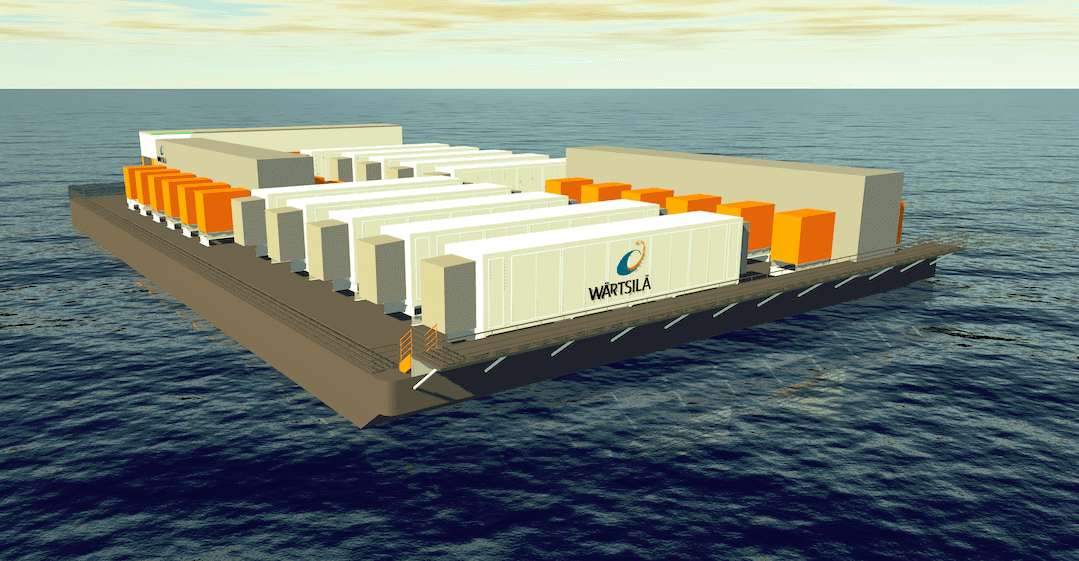Floating Energy storage systems take shape
Floating energy storage systems are being developed for use in areas wanting to increase their use of renewable energy, but with constraints on the land available that could be used for solar and wind farms or land-based energy storage.
Southeast Asia is one area ready to utilize such installations. The technology group Wärtsilä on March 9 said it will deliver a flexible floating barge-mounted energy storage system (ESS) that is designed to help a Philippine operator meet its grid requirements.
The news comes a few months after Singapore’s Energy Market Authority (EMA) and Keppel Offshore & Marine said their partnership is researching development of Singapore’s first floating ESS. The two groups have been working on designs for energy solutions for the marine sector, and said their technologies can be part of the future for electric-powered and hybrid ships.
Wärtsilä on Tuesday said it received a combined contract award that will incorporate both a barge-mounted ESS and an existing thermal power barge from Therma Marine Inc. (TMI), a subsidiary of Aboitiz Power Corp., a Filipino company involved in power generation, distribution, and retail electricity services. The 54-MW/32-MWh ESS is being delivered by Wärtsilä on an engineering, procurement, and construction basis.

1. This is an artist’s rendering of Wärtsilä’s barge-mounted energy storage system that will be deployed to power a town in the Philippines. The project involves 10 Wärtsilä GridSolv Max systems, supported by advanced GEMS software, aboard the barge. Courtesy: Wärtsilä
The Wärtsilä barge (Figure 1) will be placed next to TMI’s thermal power barge to provide a total of 100 MW of capacity for the town of Maco in the province of Davao de Oro. Wärtsilä in a news release Tuesday said the project will be handled on a fast-track basis, with delivery scheduled to be completed in late 2021. The companies said it will be the first-ever deployment of a floating energy storage solution in Southeast Asia.
“Wärtsilä will meet our urgent needs with this innovative and unique floating energy storage barge. Their ability to deliver this first-of-a-kind solution in less than 12 months is, to say the least, impressive,” commented Emmanuel V. Rubio, Aboitiz Power President and Chief Executive Officer.
“In addition to meeting TMI’s needs, it is important to note that Wärtsilä is the sole EPC provider for this kind of a project. The alternative would be to have one supplier for the barge and another for the energy storage system, which would require a lot of coordination and would undoubtedly slow the final delivery considerably,” added Kari Punnonen, Wärtsilä Energy Business Director, Australasia.
The Philippines’ project will involve placing 10 Wärtsilä GridSolv Max systems, supported by the company’s advanced GEMS energy management platform , aboard a floating barge. The solution will provide flexibility for TMI in its ancillary service contract with the National Grid Corp. of the Philippines.
Wärtsilä’s GridSolv Max is an energy storage solution “designed for streamlined installation and integration, significantly increasing energy density and system reliability to meet customer energy needs while also adequately future-proofing their hardware assets,” according to the company. Wärtsilä said the technology’s “innovative and standardized architecture supports both stand-alone energy storage deployments as well as integrated hybrids with thermal or renewable generation assets.”
Wärtsilä at present has 26 power barge installations worldwide, with a total power capacity of 1,500 MW. The company said the technology “enables fast supply of electricity to areas with limited infrastructure and is a mobile asset, enabling relocation or trade.”
Singapore Installation
The Singapore system will incorporate a battery ESS, with a 7.5-MW/7.5-MWh lithium-ion battery, on what Keppel calls its Floating Living Lab (FLL). Officials said it will be Singapore’s largest ESS deployment to date.
Keppel said the FLL is expected to be operational by the end of this year. The offshore floating testbed also will have liquefied natural gas (LNG) bunker facilities and be able to refuel small-scale supplier FueLNG’s bunker vessel. FueLNG, a joint venture between Keppel and Shell, is an LNG bunker supplier in Singapore.
Keppel officials have said they anticipate the project will function as the test of an innovative liquid-cooling solution that utilizes seawater to cool the battery cells, which should support the lifecycle of the ESS, as the cooling system will be designed to improve the project’s performance in Singapore’s hot and humid climate. It is expected to be operational in 2023.
The ESS also will utilize a novel battery stacking solution in order to reduce its footprint. Keppel officials said they expect the stacking arrangement could reduce the installation’s space requirement by up to 40%, and could also be applied to mainland projects.
You can return to the main Market News page, or press the Back button on your browser.

